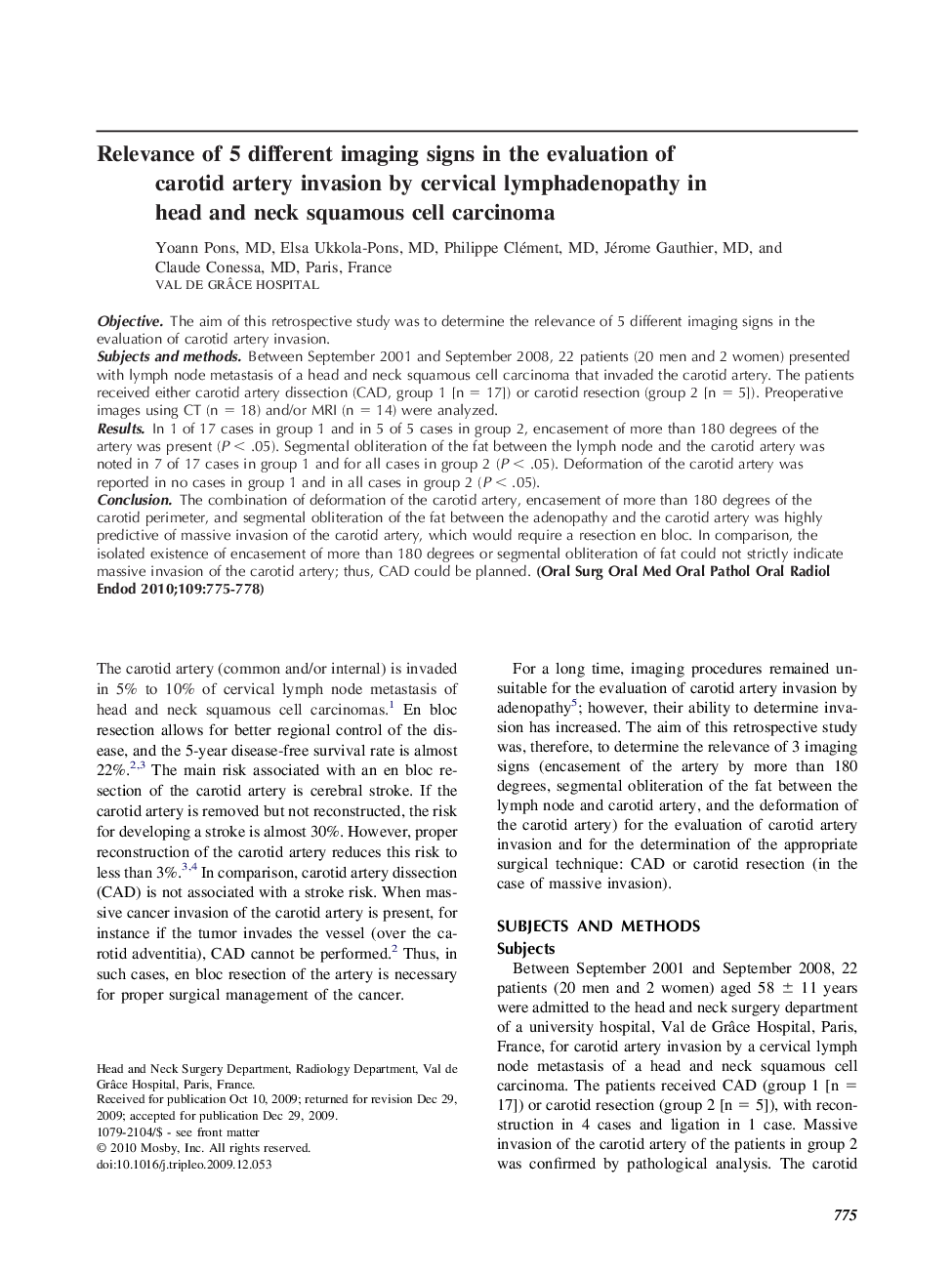| Article ID | Journal | Published Year | Pages | File Type |
|---|---|---|---|---|
| 3167647 | Oral Surgery, Oral Medicine, Oral Pathology, Oral Radiology, and Endodontology | 2010 | 4 Pages |
ObjectiveThe aim of this retrospective study was to determine the relevance of 5 different imaging signs in the evaluation of carotid artery invasion.Subjects and methodsBetween September 2001 and September 2008, 22 patients (20 men and 2 women) presented with lymph node metastasis of a head and neck squamous cell carcinoma that invaded the carotid artery. The patients received either carotid artery dissection (CAD, group 1 [n = 17]) or carotid resection (group 2 [n = 5]). Preoperative images using CT (n = 18) and/or MRI (n = 14) were analyzed.ResultsIn 1 of 17 cases in group 1 and in 5 of 5 cases in group 2, encasement of more than 180 degrees of the artery was present (P < .05). Segmental obliteration of the fat between the lymph node and the carotid artery was noted in 7 of 17 cases in group 1 and for all cases in group 2 (P < .05). Deformation of the carotid artery was reported in no cases in group 1 and in all cases in group 2 (P < .05).ConclusionThe combination of deformation of the carotid artery, encasement of more than 180 degrees of the carotid perimeter, and segmental obliteration of the fat between the adenopathy and the carotid artery was highly predictive of massive invasion of the carotid artery, which would require a resection en bloc. In comparison, the isolated existence of encasement of more than 180 degrees or segmental obliteration of fat could not strictly indicate massive invasion of the carotid artery; thus, CAD could be planned.
